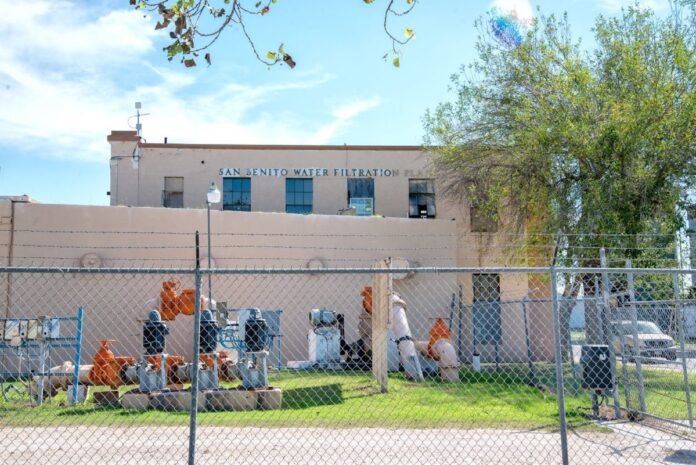SAN BENITO — Three weeks after the old water plant’s shutdown, the city continues to implement a consultant’s recommendations as part of a $3 million project to renovate the facility.
So far, the city has spent $527,992 to implement recommendations aimed at ensuring the 90-year-old plant can continue to serve as the city’s primary water source, spokeswoman Martha McClain said yesterday.
“The water plant is an old facility but it remains in compliance with (Texas Commission on Environmental Quality) requirements and continues to produce quality, safe drinking water,” City Manager Manuel De La Rosa said in a statement.
In January 2015, San Antonio-based consultant Lou Portillo’s inspection of the plant found three inoperable pumps and recommended the city refurbish the plant’s filters.
“The city commission realized some time back the need for a comprehensive evaluation and therefore authorized the study,” De La Rosa said. “We are using the completed report to evaluate and assess the plant’s performance on a 24-7 daily basis.”
City officials have divided work to renovate the plant into three phases.
But Portillo expanded his recommendations after the water plant shut down Jan. 8, cutting off water across town and leading the city to issue a temporary advisory warning residents to boil water before drinking.
As part of the $3 million project’s first phase, city commissioners Nov. 1 approved the purchase of a $165,000 triplex backwash pump system, McClain said.
McClain said officials are receiving bids for the installation of the pumps, a control panel, yard piping and activation.
“As we were finishing up Phase 1, we undertook a project to replace the backwash pumps,” De La Rosa said. “That remains in progress.”
So far, the city has paid JMJ Contracting $362,992 to implement the first phase, McClain said.
Based on Portillo’s recommendation, commissioners Nov. 17 approved spending $91,812 to rehabilitate three water filters to prevent turbidity, which affects water clarity, from entering the system.
McClain said the project’s second phase includes a design plan, new technological and electrical components featuring a supervisory control and data acquisition system, an automation control system and chemical treatment containers.
“We are in the process now of incorporating Phase II into the continuing rehabilitation process to ensure a safe and secure water source for our citizens,” De La Rosa said.
This month, Portillo issued further recommendations aimed at ensuring the plant would not shut down amid low temperatures as it did Jan. 8.
In a review of circumstances leading to the plant’s shutdown, Portillo told city commissioners “freezing” temperatures created condensation which froze water in the plant’s air line, creating a leak that dropped the system’s water pressure Jan. 8.
Portillo recommended the city install heaters and insulation to protect equipment in the event of cold temperatures.
McClain said the city has implemented Portillo’s recommendations to ensure freezing would not cause another shutdowns.
“The air lines and regulators that failed have been replaced and heaters have been installed to keep the space environment heated during freeze events,” McClain said. “Also, additional measures have been undertaken to protect other equipment from freezing during inclement weather.”
In 2014, the city turned to the old water plant as its primary water source after shutting down its $17.9 million water plant because it wasn’t efficiently working.
In turn, the city filed a lawsuit against companies behind the construction of the water plant built in 2009.




